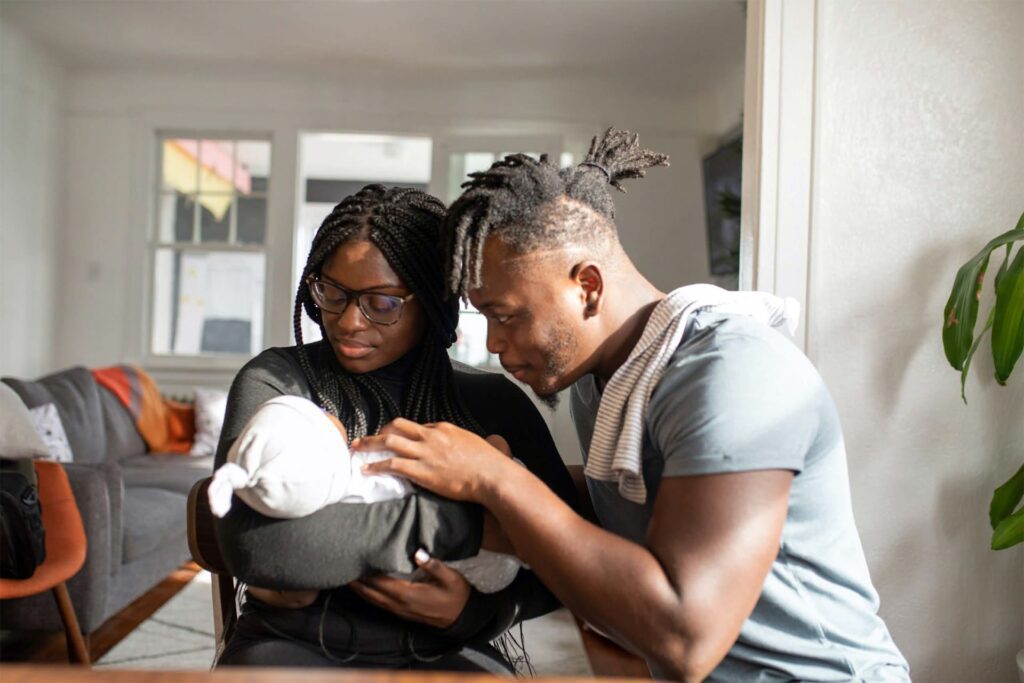I’ve always wanted to have children, but that desire came with doubts. What would giving birth be like? Could I bear it? In my twenties, I could not imagine how women gave birth with all the pain and loneliness associated with it. A large part of me was afraid. Did I have the capacity to endure the pain? How could I do anything but dread this necessary rite of passage into motherhood?
A chance encounter at a local bookstore largely altered this fear-based thinking in me. I browsed the maternity section. A bright yellow book leapt to my attention. I picked it up. Birthing From Within. The image of a pregnant woman sitting on the ground of a cave-like dwelling instantly resonated with a part of me that connected to an ancient heritage I was scarcely aware existed. Without too much thought, I bought the book. Unknowingly, this great work by Pam England would open up in me an entire new worldview around giving birth.
I learned how birth has historically been practiced and experienced across cultures. I became absorbed in stories of women giving birth in familiar or minimalist environments, surrounded by community: other biological children, aunts, sisters, mothers, or other family members. I was shown that the experience of birth was originally one of sisterhood, community, and connection; where giving birth was viewed as a natural occurrence, one a woman’s body was prepared to handle with minimal intervention if any—and could happen spontaneously even when left alone.
I learned that laboring was often a time when, alone, a woman becomes fused with her body and her unborn, hovering on the cusp of life and death. It is a primal brain that gives birth, not the higher processing cognitive one. Throughout the ages, a pregnant woman was supported, respected, seen and heard. Birth was and still is a life-changing event. In many cultures, it is a time of feasting and celebration.
From this personal intellectual awakening, I began the real work of spiritual, mental, and physical preparation for giving birth. Many of those early pregnancy days, in-between being sick with constant nausea, were spent reading posts in relevant support groups, scouring the internet, reading articles, etc. I wanted to curate a birth process and experience for myself that I could look forward to. I want to look back on my experience and be grateful and proud.
Since having four children, I’ve realized the path of nascent motherhood is a three-fold—and sometimes a four-fold—path. When parenthood is intentional, there is a long preparation period before the body ever becomes pregnant, before a baby lays in the cradle. This process can last months, even years. No one but couples know the stress and heartache of trying for months or years to have a child. But once one has successfully conceived and passed the interminable period where miscarriages are common, and it becomes safe to announce to family and friends that a new bundle of joy is on the way, the next phase of becoming a mother begins.
A woman nurtures the life within her. She may be filled with a myriad of emotions, both complex and conflicting. She may be excited and spilling over with joy at the prospect of having a child. At other times, she may be anxious or downright fearful of the hurdles to come. Human gestation is divided up into three trimesters, and each phase has its own unique psychological landscape and physical symptoms that accompany it.
The next portion of the journey of nascent motherhood encompasses labor and delivery. It can take the full nine months to prepare a woman for this momentous event. The postpartum period is the last leg of the journey—often completely left out of the preparation and discussion of giving birth. It is the time when the new mother does her best to adjust, adapt, and cope with life with a totally dependent little one. It is filled with extreme highs and lows: from the stress of around-the-clock care of an infant, buoying emotions, and a body that struggles to heal from the trauma of birth, a body constricting and adjusting back to its pre-pregnancy state. This last leg is possibly the hardest part of the journey. A new parent has all of this to contend with, in addition to the life that existed before the baby: relationships, work, chores, and the continuous happenings and mis-happenings of daily life.
With the birth of each child, I have learned that throughout each step of this process, a woman needs community support, connection with other women, and long periods of rest and seclusion. Modern nuclear families, single-family homes, daunting work schedules, and economic constraints do not lend themselves well to these needs and requirements. A woman internalizes her birth story. That is, the experience of pregnancy, giving birth, and the days immediately after, follow and inform her for years to come. Every birthing person will need to reflect over this experience at some point, and many will need to heal from feelings of disappointment, loss, and pain.
Giving birth is a rite of passage, it is a time to reclaim joy, spiritual fulfillment, and connection to one’s body and to the collective body of family and community. To ensure this reclamation, birthing people will always need to be surrounded by love, understanding, and a team of supportive individuals. It is my hope that this blanket of kinship and bonding for the mother lasts long after the newborn baby lies safe and asleep inside the cradle.
-Rabiah Lewis, MPH

